
The 8th Guards Order of Lenin Combined Arms Army is an army of the Russian Ground Forces, headquartered in Novocherkassk, Rostov Oblast, within Russia′s Southern Military District, that was reinstated in 2017 as a successor to the 8th Guards Army of the Soviet Union's Red Army, which was formed during World War II and was disbanded in 1998 after being downsized into a corps. Military Unit в/ч 61877.
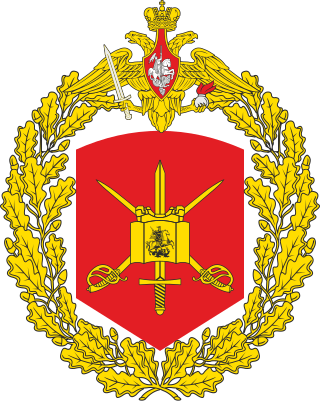
The 1st Guards Tank Army is a tank army of the Russian Ground Forces. в/ч 73621.

The Leningrad Military District was a military district of the Armed Forces of the Russian Federation. In 2010 it was merged with the Moscow Military District, the Northern Fleet and the Baltic Fleet to form the new Western Military District. In December 2022, Defense Minister Sergey Shoigu proposed to reestablish it along with the Moscow Military District, a decision confirmed in June 2023 by Deputy Chief of the General Staff Yevgeny Burdinsky. On December 17, 2023 Vladimir Putin announced plans to recreate the Leningrad Military District as a reaction to Finland joining NATO.
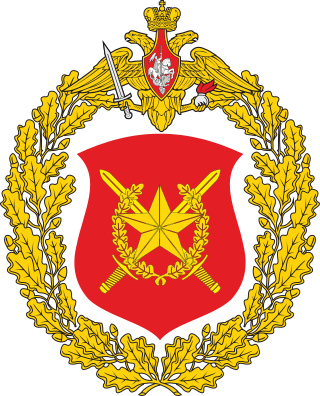
The 2nd Guards M. I. Kalinin Taman Motor Rifle Division, commonly known as the Tamanians or Taman Division, is a Guards mechanised infantry division of the Russian Ground Forces. Its Military Unit Number is 23626.
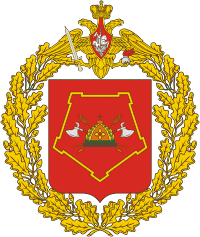
The Siberian Military District was a Military district of the Russian Ground Forces. The district was originally formed as a military district of the Russian Empire in 1864. In 1924 it was reformed in the Red Army. After the end of World War II the district was split into the Western and Eastern Siberian Military Districts. In 1956 the district was reformed. In 2010 it was divided between the two newly formed Central and Eastern Military Districts.
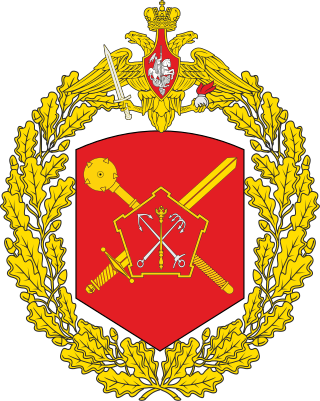
The 6th Combined Arms Army is a field army of the Red Army and the Soviet Army that was active with the Russian Ground Forces until 1998 and has been active since 2010 as the 6th Combined Arms Army. Military Unit number в/ч 31807.

The Transbaikal Military District was a military district of first the Soviet Armed Forces and then the Armed Forces of the Russian Federation, formed on 17 May 1935 and included the Buryat Republic, Chita Oblast, and Yakutia. Chita was the headquarters of the district. It was finally disbanded on 1 December 1998 by being amalgamated with the Siberian Military District, though Chita remained the headquarters of the new amalgamated district.

The 20th Guards Combined Arms Army is a field army. In 1991, after the dissolution of the Soviet Union, the army became part of the Russian Ground Forces. Military Unit Number в/ч 89425.
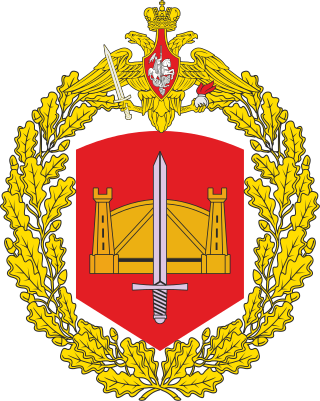
The 58th Guards Combined Arms Army is an army of the Russian Ground Forces, headquartered at Vladikavkaz, North Ossetia-Alania, within Russia's Southern Military District. It was formed in 1941 as part of the Soviet Union's Red Army and has been part of the Russian Army since 1995. It has the Military Unit Number (в/ч) is 47084.
The Arkhangelsk Military District was a regional military district of the Red Army which oversaw the North-Western part of the Russian Soviet Federative Socialist Republic. The district was formed in 1940 during a reorganisation of the Army, but disbanded in 1944, reformed two years later, and finally disbanded in 1951.
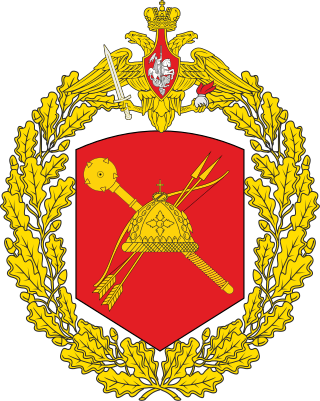
The 41st Combined Arms Army is a field army of the Russian Ground Forces, currently part of the Central Military District. Originally, it was formed in 1942 as part of the Soviet Red Army, during World War II. It was reformed in 1998, when the Transbaikal Military District and Siberian Military District were amalgamated.
The 39th Army was a Field Army of the Soviet Union's Red Army during World War II and of the Soviet Army during the Cold War.
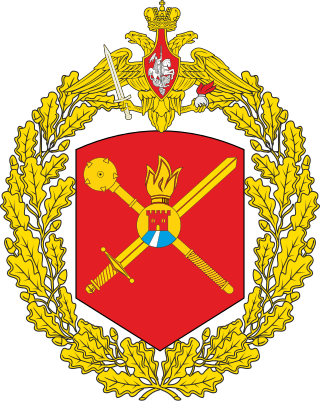
The 49th Combined Arms Army is a combined arms (field) army (CAA) of the Russian Ground Forces, formed in 2010 and headquartered in Stavropol. Military Unit в/ч 35181.
The 31st Army was a field army of the Red Army during the Second World War.

The 252nd Rifle Division was the eighth of a group of 10 regular rifle divisions formed from cadres of NKVD border and internal troops as standard Red Army rifle divisions, very shortly after the German invasion, in the Moscow Military District.
The 69th Covering Brigade is a unique border protection brigade of the Russian Ground Forces, stationed at Babstovo, Jewish Autonomous Oblast, and part of the 35th Army. Military Unit в/ч 61424.
The 375th Rifle Division was raised in 1941 as an infantry division of the Red Army, and served for the duration of the Great Patriotic War in that role. It began forming in August, 1941 in the Urals Military District. It reached the fighting front in December, coming under command of the 29th Army in the vicinity of the Rzhev salient and it took part in the bloody and tragic battles for this heavily-fortified position until March, 1943, mostly as part of 30th Army. Following the German evacuation of the salient the 375th got a brief spell in reserve before being reassigned to Voronezh Front in the buildup to the Battle of Kursk. When the offensive began it held a crucial sector on the extreme left flank of 6th Guards Army where the II SS Panzer Corps attempted to break through south of the salient. Following the German defeat the division joined in the counteroffensive towards Kharkov in August and won its first battle honor. It continued to advance through Ukraine and into Romania over the next eight months, being brought to a halt east of Iași in the spring of 1944. In late August the 2nd and 3rd Ukrainian Fronts crushed the defending German and Romanian forces, and on the last day of the month the 375th played a leading role in the capture of the Romanian capital, Bucharest; it won its second battle honor and two of its rifle regiments were awarded decorations. For the duration of the war the division fought its way through Romania and Hungary, finally advancing into Austria with 7th Guards Army. Its record of admirable service was capped with the award of the Order of the Red Banner soon following the German surrender, but it was nevertheless disbanded shortly thereafter.
The 379th Rifle Division was raised in 1941 as an infantry division of the Red Army, and served for the duration of the Great Patriotic War in that role. It began forming in August 1941 in the Urals Military District. It first served in the winter counteroffensive west of Moscow, and later in the bitter fighting around the Rzhev salient, but was moved north late in 1942. It took up positions along the Volkhov River, mostly under command of the 8th Army, and continued to serve in this Army's battles near Leningrad until September 1943, when it was transferred to the 2nd Baltic Front, where it would stay for the remainder of its service. During this period the division served under many army and corps commands but mostly in the 3rd Shock Army. The division ended the war in Lithuania, helping to contain and reduce the German forces trapped in the Courland Pocket. By this time it was judged as being surplus to the Red Army's needs and in December 1944 its personnel were merged with the 245th Rifle Division to bring that division closer to establishment strength; the latter division also inherited its battle honor. The 379th was officially disbanded on the first day of 1945.

Vasily Alexandrovich Yushkevich was a Soviet Army colonel general.
The 11th Army Corps, is a tactical formation of the Coastal Troops of the Russian Navy, formed in 2016 as part of the Baltic Fleet, in the Western Military District.













